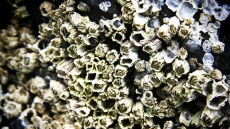Bacteria just do not swim with propellers but use the entire body, a new study shows.
It has long been assumed that flagella - corkscrew-like appendages - push or pull bacterial cells like tiny propellers.
A new research shows that in at least one species, the cell body is actively carving out a helical trajectory through the water that produces thrust and contributes to the organism's ability to swim.
"This is the first time that it has been shown quantitatively how the cell body is involved in the swimming motion," said Kenny Breuer, a professor at Brown University's school of engineering.
The finding could shed new light on the evolution of cell body shape.
For this study, researchers used a method that enabled them to closely follow bacterial cells as they swim in real time.
The microscope was equipped with a mobile stage on which swimming bacteria were viewed.
Once the microscope locked on to a bacteriam called caulobacter crescentus, the stage moved according to the bacterium's movement.
A closer look revealed that the cell body traces a wobbly, helical trajectory as it moves - a trajectory that looks a bit like the body is traveling though an invisible spiral tube.
The findings were published in the journal Proceedings of the National Academy of Sciences.





